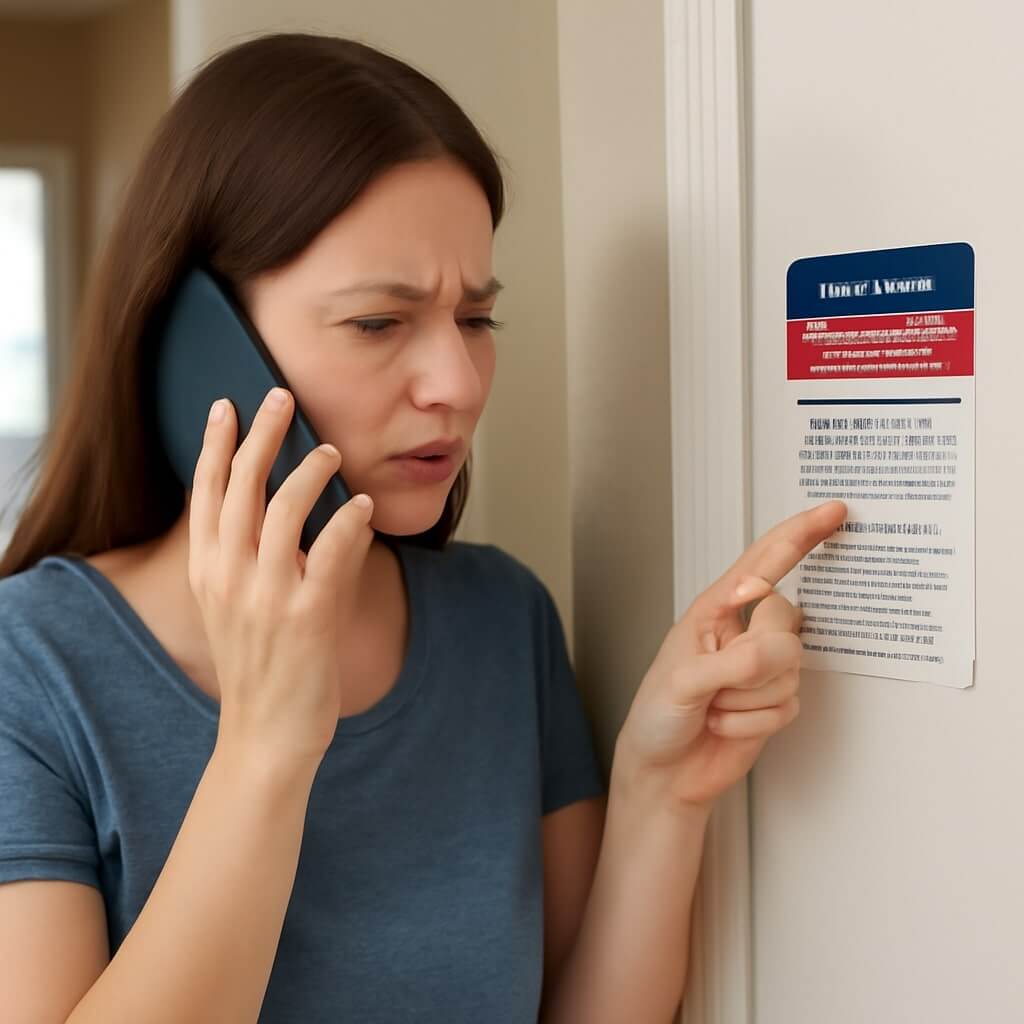In 2025, enhancing your home maintenance skills can greatly boost your property value and save you money. By enrolling in essential classes, you’ll learn to tackle common issues like leaky faucets and basic wiring safely. You’ll also explore energy efficiency techniques and gain carpentry skills for furniture repairs. But that’s just the beginning—understanding landscaping and home safety systems is equally crucial. Let’s explore which classes can equip you for these important tasks.
Key Takeaways
- Plumbing Basics: Learn to fix common issues like leaky faucets and toilets to save on water bills and improve home efficiency.
- Electrical Essentials: Understand safety protocols and basic wiring skills to handle electrical repairs safely and effectively.
- Home Energy Efficiency: Explore insulation and weatherization techniques to reduce energy costs and enhance home comfort.
- Carpentry Skills: Gain woodworking skills for furniture repair and building, empowering you to create functional home decor.
- Home Safety Systems: Familiarize yourself with installing and maintaining alarm systems, security cameras, and motion lights for enhanced home security.
Plumbing Basics: Fixing Leaky Faucets and Toilets

Leaky faucets and toilets can be more than just annoying; they waste water and increase your utility bills.
Leaky faucets and toilets waste water and inflate your bills—address those drips before they become costly headaches!
To tackle faucet repair, start by turning off the water supply, then disassemble the faucet. Check for worn washers or O-rings and replace them as needed.
For toilet maintenance, inspect the flapper valve and chain for any signs of wear. If the toilet runs continuously, adjust or replace these components to stop the leak.
Regularly checking and maintaining your plumbing can save you money and prevent more significant issues down the line. Don’t ignore those drips—fix them promptly!
Electrical Essentials: Safety and Basic Wiring
When working with electricity, safety should always be your top priority.
You’ll learn essential precautions to protect yourself, along with basic wiring techniques that can help you tackle common circuit issues.
Understanding these fundamentals not only keeps you safe but also empowers you to handle electrical tasks around your home confidently.
Electrical Safety Precautions
Although electrical work can seem intimidating, understanding essential safety precautions is crucial for anyone tackling home maintenance tasks. You should always turn off the power at the circuit breaker before starting any work to prevent electrical hazards. Additionally, be mindful of circuit overloads; don’t exceed the recommended amperage for outlets.
Here’s a quick reference table to keep you safe:
| Precaution | Description |
|---|---|
| Use insulated tools | Reduces the risk of shock |
| Wear rubber-soled shoes | Provides better footing and insulation |
| Check for damaged cables | Prevents short circuits and fires |
| Avoid wet hands | Reduces risk of electrical shock |
Basic Wiring Techniques
Understanding basic wiring techniques is essential for anyone looking to tackle electrical projects safely and effectively.
Familiarizing yourself with these concepts can prevent hazards and improve your skills. Here are four key points to remember:
- Wire Color Coding: Recognize colors—black or red for hot wires, white for neutral, and green or bare for ground.
- Basic Circuiting Practices: Always turn off power at the breaker before starting.
- Using Proper Tools: Invest in quality tools like wire strippers and multimeters.
- Connections: Guarantee secure connections using wire nuts or terminal blocks to prevent shorts.
Master these techniques for safe electrical work!
Common Circuit Issues
Circuit issues can arise unexpectedly, affecting your home’s electrical system and safety.
One common problem is circuit overloads, which occur when you plug in too many devices on a single circuit, causing breakers to trip or fuses to blow. To prevent this, always distribute your appliances across multiple circuits.
Additionally, watch for faulty connections, often indicated by flickering lights or warm outlets. These can lead to arcing, posing fire hazards.
Regularly inspect your wiring and connections, and if you’re unsure, consult a professional electrician. Understanding these issues guarantees your home remains safe and functional.
Home Energy Efficiency: Insulation and Weatherization Techniques
When you prioritize home energy efficiency, insulation and weatherization techniques play an essential role in reducing energy costs and enhancing comfort.
Here are four key strategies to take into account:
- Choose the Right Insulation Materials: Use fiberglass, foam board, or cellulose for ideal thermal resistance.
- Seal Gaps and Cracks: Apply caulk or weatherstripping around windows and doors to prevent drafts.
- Insulate Attics and Basements: Guarantee proper insulation in these areas to reduce heat loss.
- Install Storm Windows: They provide an extra barrier against cold air, improving overall efficiency.
Implementing these techniques will make your home cozier and more cost-effective.
Carpentry Skills: Repairing and Building Furniture
Carpentry skills can transform your living space, allowing you to repair or build furniture that suits your style and needs.
Learning furniture restoration techniques can breathe new life into old pieces, saving money while enhancing your decor.
Start with basic woodworking techniques like measuring, cutting, and joining, which are essential for both repairs and new builds.
Familiarize yourself with tools such as saws, drills, and sanders, as they’ll make your projects easier and more precise.
Whether you’re fixing a wobbly chair or crafting a custom bookshelf, these skills empower you to create functional and beautiful furniture for your home.
Painting and Finishing: Techniques for a Professional Look
Achieving a professional look in your painting and finishing projects can elevate your home’s aesthetic considerably.
Elevate your home’s aesthetic with professional-quality painting and finishing techniques.
Here are some essential techniques to master:
- Color Selection: Choose colors that complement your space and consider lighting.
- Surface Preparation: Clean, sand, and prime surfaces for a smooth finish.
- Application Technique: Use high-quality brushes or rollers for even application; avoid overloading them.
- Finishing Touches: Apply a protective topcoat to enhance durability and shine.
Landscaping and Gardening: Maintaining Curb Appeal
To keep your home’s exterior inviting, mastering seasonal planting techniques is essential.
You’ll also need to focus on lawn care essentials and learn effective pruning and trimming tips to maintain that polished look.
Let’s explore how these practices can enhance your curb appeal throughout the year.
Seasonal Planting Techniques
Seasonal planting techniques can greatly enhance your home’s curb appeal, transforming your landscape with vibrant colors and lush greenery throughout the year.
To get started, follow these steps:
- Know Your Climate: Research your area’s climate zones to choose the right seasonal crops.
- Create Planting Schedules: Plan your planting calendar around ideal seasons for each crop.
- Prepare Your Soil: Make sure your soil is nutrient-rich and well-drained for healthy growth.
- Rotate Your Crops: Practice crop rotation to maintain soil health and prevent pests.
Lawn Care Essentials
While maintaining your lawn may seem straightforward, understanding the essentials can make a significant difference in achieving a lush, green yard that enhances your home’s curb appeal. Focus on effective lawn fertilization strategies to nourish your grass, such as applying slow-release fertilizers during the growing season. Additionally, implement pest control methods, like natural insect repellents or targeted treatments, to protect your lawn from unwanted invaders.
| Task | Frequency |
|---|---|
| Fertilization | Every 6-8 weeks |
| Mowing | Weekly, 1/3 height |
| Aeration | Annually |
| Watering | 1 inch/week |
| Pest Inspection | Monthly |
Pruning and Trimming Tips
Proper pruning and trimming can transform your garden into a well-manicured landscape that boosts your home’s curb appeal.
To master effective pruning techniques and trimming strategies, follow these tips:
- Timing Matters: Prune in late winter or early spring for flowering plants.
- Use Sharp Tools: Clean, sharp shears make precise cuts and prevent plant damage.
- Shape Wisely: Trim to enhance natural growth patterns, ensuring balanced aesthetics.
- Remove Deadwood: Regularly eliminate dead or diseased branches to promote healthy growth.
Home Safety and Security: Essential Systems and Practices

Guaranteeing your home is safe and secure involves several essential systems and practices that every homeowner should implement. Start by installing a reliable home alarm system and security cameras to monitor your property effectively. Regularly check and maintain these systems to guarantee they’re functioning correctly. Additionally, reinforce doors and windows with quality locks and consider motion sensor lights around your property.
| System | Benefits | Maintenance Tips |
|---|---|---|
| Home Alarm | Deters burglars | Test monthly |
| Security Cameras | 24/7 monitoring | Clean lenses regularly |
| Motion Lights | Enhances visibility | Replace bulbs annually |
Conclusion
Enrolling in these seven essential home maintenance classes in 2025 can greatly boost your DIY skills and enhance your property’s value. By mastering plumbing, electrical safety, energy efficiency, carpentry, painting, landscaping, and home security, you’ll not only save on costly repairs but also create a safer, more attractive living space. Investing time in these courses equips you with practical knowledge, empowering you to tackle home projects confidently and guarantee your home remains a haven for years to come.




